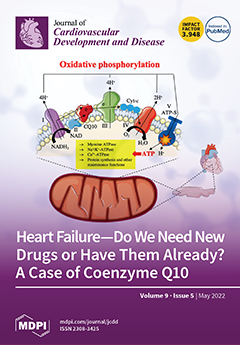Introduction: Heart failure (HF) is a clinical syndrome caused by structural and functional cardiac abnormalities resulting in the impairment of cardiac function, entailing significant mortality. The prevalence of HF has reached epidemic proportions in the last few decades, mainly in the elderly, but recent evidence suggests that its epidemiology may be changing. Objective: Our objective was to estimate the prevalence of HF and its subtypes, and to characterize HF in a population of integrated care users. Material and Methods: A non-interventional cross-sectional study was performed in a healthcare center that provides primary, secondary and tertiary health cares. Echocardiographic parameters (left ventricle ejection fraction (LVEF) and evidence of structural heart disease) and elevated levels of natriuretic peptides were used to define two HF phenotypes: (i) HF with a reduced ejection fraction (HFrEF, LVEF ≤ 40% and either NT-proBNP ≥ 400 pg/mL (≥600 pg/mL if atrial fibrillation (AF)/flutter) or BNP ≥ 100 pg/mL (≥125 pg/mL if AF/flutter)) and (ii) HF with a non-reduced ejection fraction (HFnrEF), which encompasses both HFpEF (LVEF ≥ 50% and either NT-proBNP ≥ 200 pg/mL (≥600 pg/mL if AF/flutter) or BNP ≥ 100 pg/mL (≥125 pg/mL if AF/flutter) in the presence of at least one structural cardiac abnormality) and HF with a mildly reduced fraction (HFmrEF, LVEF within 40–50% and either NT-proBNP ≥ 200 pg/mL (≥600 pg/mL if AF/flutter) or BNP ≥ 100 pg/mL (≥125 pg/mL if AF/flutter) in the presence of at least one structural cardiac abnormality). The significance threshold was set at
p ≤ 0.001. Results: We analyzed 126,636 patients with a mean age of 52.2 (SD = 18.3) years, with 57% (
n = 72,290) being female. The prevalence of HF was 2.1% (
n = 2700). The HF patients’ mean age was 74.0 (SD = 12.1) years, and 51.6% (
n = 1394) were female. Regarding HF subtypes, HFpEF accounted for 65.4% (
n = 1765); 16.1% (
n = 434) had HFmrEF and 16.3% (
n = 439) had HFrEF. The patients with HFrEF were younger (
p < 0.001) and had a history of myocardial infarction more frequently (
p < 0.001) compared to HFnrEF, with no other significant differences between the HF groups. The HFrEF patients were more frequently prescribed CV medications than HFnrEF patients. Type 2 Diabetes Mellitus (T2D) was present in 44.7% (
n = 1207) of the HF patients. CKD was more frequently present in T2D vs. non-T2D HF patients at every stage (
p < 0.001), as well as stroke, peripheral artery disease, and microvascular disease (
p < 0.001). Conclusions: In this cohort, considering a contemporary definition, the prevalence of HF was 2.1%. HFrEF accounted for 16.3% of the cases, with a similar clinical–epidemiological profile having been previously reported in the literature. Our study revealed a high prevalence of patients with HFpEF (65.4%), raising awareness for the increasing prevalence of this entity in cardiology practice. These results may guide local and national health policies and strategies for HF diagnosis and management.
Full article






